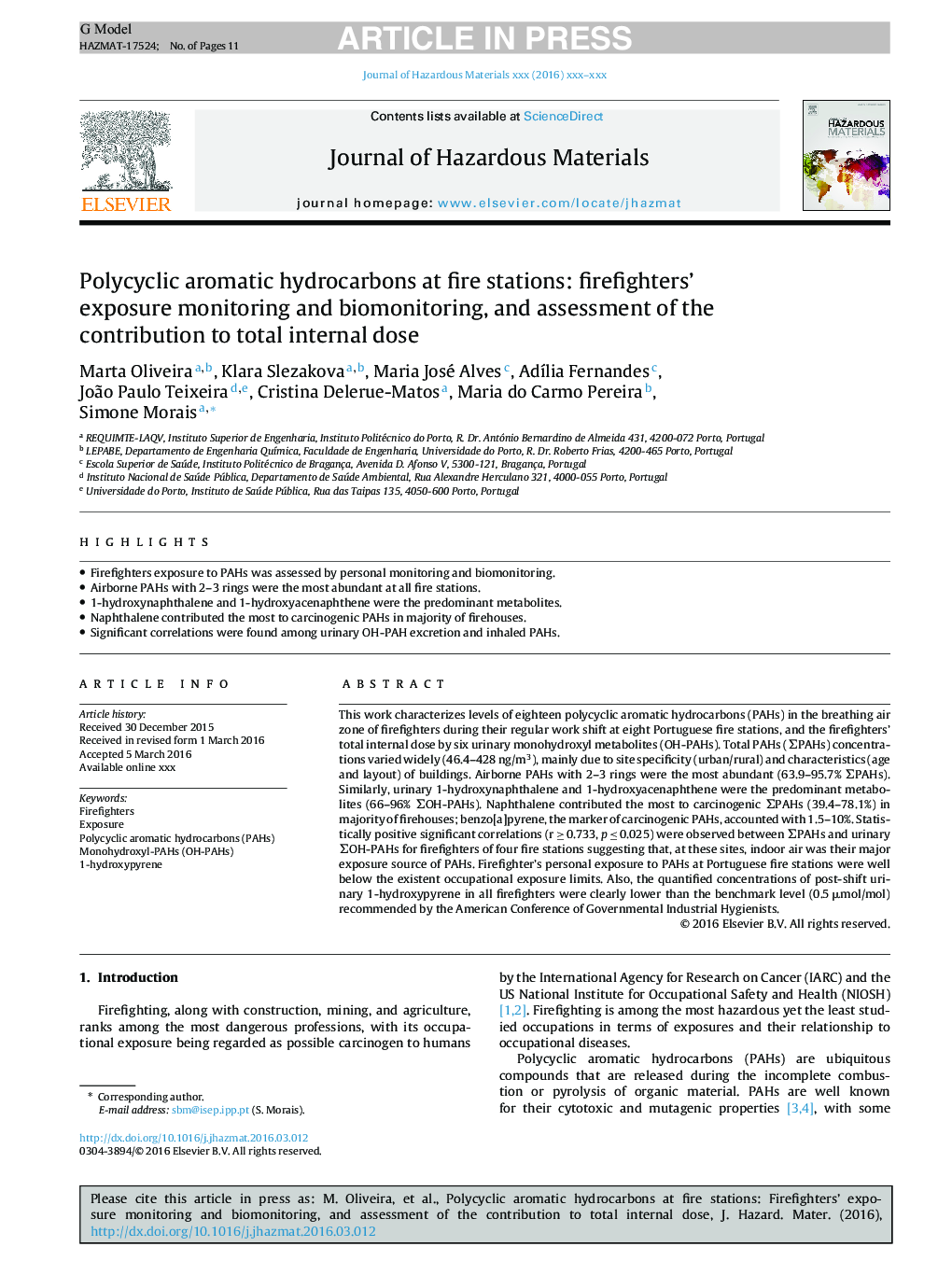| Article ID | Journal | Published Year | Pages | File Type |
|---|---|---|---|---|
| 4979951 | Journal of Hazardous Materials | 2017 | 11 Pages |
Abstract
This work characterizes levels of eighteen polycyclic aromatic hydrocarbons (PAHs) in the breathing air zone of firefighters during their regular work shift at eight Portuguese fire stations, and the firefighters' total internal dose by six urinary monohydroxyl metabolites (OH-PAHs). Total PAHs (ΣPAHs) concentrations varied widely (46.4-428 ng/m3), mainly due to site specificity (urban/rural) and characteristics (age and layout) of buildings. Airborne PAHs with 2-3 rings were the most abundant (63.9-95.7% ΣPAHs). Similarly, urinary 1-hydroxynaphthalene and 1-hydroxyacenaphthene were the predominant metabolites (66-96% ΣOH-PAHs). Naphthalene contributed the most to carcinogenic ΣPAHs (39.4-78.1%) in majority of firehouses; benzo[a]pyrene, the marker of carcinogenic PAHs, accounted with 1.5-10%. Statistically positive significant correlations (r â¥Â 0.733, p â¤Â 0.025) were observed between ΣPAHs and urinary ΣOH-PAHs for firefighters of four fire stations suggesting that, at these sites, indoor air was their major exposure source of PAHs. Firefighter's personal exposure to PAHs at Portuguese fire stations were well below the existent occupational exposure limits. Also, the quantified concentrations of post-shift urinary 1-hydroxypyrene in all firefighters were clearly lower than the benchmark level (0.5 μmol/mol) recommended by the American Conference of Governmental Industrial Hygienists.
Related Topics
Physical Sciences and Engineering
Chemical Engineering
Chemical Health and Safety
Authors
Marta Oliveira, Klara Slezakova, Maria José Alves, AdÃlia Fernandes, João Paulo Teixeira, Cristina Delerue-Matos, Maria do Carmo Pereira, Simone Morais,
